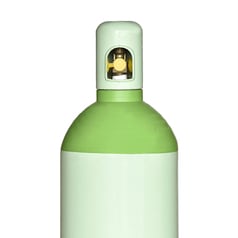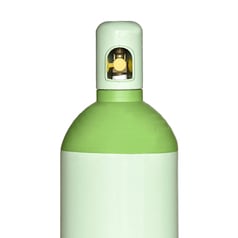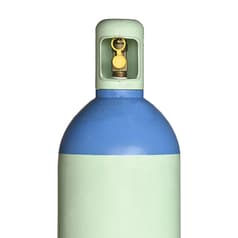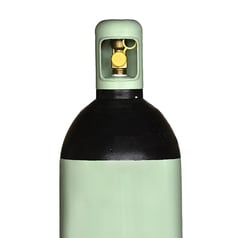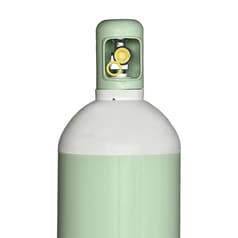Pour bénéficier d’un affichage optimal de la boutique en ligne de PanGas, vous avez besoin pour le navigateur de la version minimale suivante:
• Internet Explorer 9.0
• Mozilla Firefox 38
• Safari 8
• Chrome 45
Veuillez vous assurer que JavaScript est activé dans les paramètres de votre navigateur.
Modified atmosphere packaging (MAPAX)
- Home
- Applications
- Foodstuffs
- Modified atmosphere packaging (MAPAX)
Modified Atmosphere Packaging (MAP)
Extending shelf life – the natural way
Food manufacturers are continuously on the lookout for ways to prolong shelf lives. And this without changing the physical or chemical properties of their products or adding unnatural ingredients. Modified Atmosphere Packaging is the ideal method to achieve this. It is a natural method and still growing in popularity across the globe. In many cases, it is also a suitable addition to other methods of preservation.
More information
Linde has developed a range of product-specific MAP packaging solutions under the brand name of MAPAX®. This is a customised MAP programme on the basis of the required knowledge and information on foodstuffs and packaging (gases).
Advantages of Modified Atmosphere Packaging
- Increased sales, as you will be better positioned to meet the growing demand for fresh and naturally preserved products
- Longer shelf life thanks to MAP packaging without chemical additives or freezing
- Shelf life in the distribution chain is increased by days or even weeks
- Flavour, texture and appearance of foodstuffs remain intact for longer
- Increased return in production and distribution thanks to lower costs
MAP technology in detail
MAPAX gas mixtures normally consist of ordinary atmospheric gases such as carbon dioxide (CO2), nitrogen (N2) and oxygen (O2). These gases are used either on their own or in mixtures of specific concentrations, depending on your product.
Carbon dioxide, for example, is most effective to slow down the growth of micro-organisms (such as mould and many common aerobic bacteria). This is because CO2 is absorbed in liquid and fatty ingredients. This reduces the pH value. It also penetrates biological membranes of bacteria, causing the permeability and functionality thereof to change. Nitrogen, as a chemically inert gas, is mainly used to replace oxygen in packaging, thereby preventing oxidation. Due to the poor solubility in water, nitrogen is also used in MAP packaging of liquids, to strengthen the sturdiness of the packaging.
In moist foodstuffs, the oxygen content must be kept as low as possible, though meat forms an exception. In that case, oxygen helps to keep myoglobin in its oxidised form. This ensures the meat keeps its red appearance. Oxygen is also important in the MAP packaging of fruit and vegetables, as they need to be able to ‘breathe’.
MAPAX® for Dairy
Bacterial growth and rancidness are the main causes of loss of quality in dairy products. This depends on the properties of every specific product. Hard cheeses with a relatively low moist content are normally more susceptible to the development of mould. Yet products that contain a lot of water, such as cream or soft types of cheese tend to fall victim to fermentation and rancidness. In temperatures in excess of 7˚C, lactobacillus (lactic acid bacteria) cause problems by reducing the pH value in products, thereby making them acid. This process can be enhanced due to packaging atmospheres with an excessively high CO2 content (e.g. cottage or soft curd cheese). Your product does in fact determine the CO2 content!
Preventing the formation of mould by means of carbon dioxide
Carbon dioxide (CO2) is used in higher dosages when packaging hard cheeses. Bacterial activity is effectively inhibited. The texture of products is preserved better. Concentrations of 20% already strongly reduce the formation of moulds. Lactic acid bacteria, a natural ingredient of cheese, are hardly affected by the surrounding atmosphere. Soft cheese types are packed in atmospheres of average CO2 concentrations and a low oxygen content to slow down bacterial growth and rancidness. Concentrations of up to approx. 60% are used for hard cheeses. For soft cheeses the maximum is often 20 or 40%. This is to prevent packaging from forming a vacuum as a result of the atmospheric underpressure, as CO2 is absorbed in the watery and fatty ingredients of the product. Grated and cut cheese is also packed in modified atmospheres. Grated cheese is normally packed in an atmosphere of 70% nitrogen and 30% carbon dioxide. This way, manufacturers can prevent packaging from denting.
New opportunities for cultivated dairy products
In the past, cultivated products, such as cottage cheese and yoghurt, were not packed in protective atmospheres. However, the demand for longer shelf lives has changed this. A mixture of N2 and CO2 can prolong the shelf life of cottage cheese for example by one week.
And fresh cream?
Cream and dairy products containing cream can acidify rapidly when exposed to oxygen. Replace the air in packaging by oxygen; this way you can prevent rancidness and the growth of aerobic bacteria.
MAPAX® for Dry Foods & Bakery
Dry foodstuffs, such as cocoa products, savoury snacks, peanuts, coffee, spices and milk powder contain unsaturated fats. This makes these products more susceptible to oxidation and acidification.
Reduced mould formation through carbon dioxide
The main factors for decay in bakery products are the formation of mould and chemical decomposition. Fermentation can also play a role, e.g. in pastry, pasties or stuffed breads. The water content of bakery products is typically low. Hence the growth of micro-organisms other than mould is often not a problem. Mould is an aerobic micro-organism, which can be inhibited by packaging products in a modified atmosphere of CO2. The aim is to reduce the oxygen content to a minimum (below 1%). This will extend the shelf life by a few days. MAPAX is particularly suitable for rye bread, sweet baker products, pasties and cakes, as well as pre-baked bread.
Bakery Products
In the event of bakery products with sugar icing, an excessively high CO2 content can affect the appearance of the icing, as it is absorbed in the fatty substances. This makes the icing ‘melt’. If the CO2 content is sufficiently compensated by nitrogen, the product continues to look good. MAPAX, in combination with sealed packaging, offers adequate protection against the loss or absorption of moist.
Sensitive, dry foodstuffs
Packaging containing particularly dry foodstuffs, such powdered milk for babies, may not contain oxygen levels in excess of 0.2%. Oxidation can be effectively combated by replacing the environmental air in packaging by nitrogen (N2) or carbon dioxide (CO2), or a mixture of these gases.
MAPAX® for Fish & Seafood
The quality of fresh fish and seafood can be compromised quickly due to bacterial growth and enzymatic processes. This is caused by a high water activity and a neutral pH value (ideal for micro-organisms), as well as by the presence of enzymes, as a result of which both flavour and smell can quickly deteriorate. The decomposition of micro-organisms causes an unpleasant smell. The oxidation of unsaturated fats in fatty fish such as salmon, herring and mackerel causes a vile flavour and smell. Fish types such as herring and trout can even become rancid even before the bacterial decay becomes measurable. In order to maintain a high quality of fresh fish products, keeping the temperature around the freezing point is vital. The combination of the correct temperature and the appropriate gas mixture can prolong the shelf life of fish by a few days. Pre-condition is that the cold-chain is not interrupted.
Quality preservation with carbon dioxide
The activity of many common aerobic bacteria such as Pseudomonas, Acinetobacter and Moraxella can be strongly reduced by the presence of carbon dioxide (CO2). This bacterial inhibiting effect starts in CO2 concentrations in excess of 20% in sufficiently large gas volumes. The CO2 content is normally 50%. Depending on the storage temperature (0–2°C), the shelf life of raw fish can be extended by 3 to 5 days. The fish is packed in dishes with a film cover and within a protective atmosphere. However, excessively high concentrations of protective gas can cause undesired side effects, such as excessive reduction of the moist content in the tissue or, in the event of crab and herring, a sourish taste. Fish such as cod, flounder, plaice, haddock and whiting can be preserved up to twice as long in a modified atmosphere and a temperature of 0°C.
Colour retention with oxygen
In MAP packaging, oxygen can be applied to combat the fading of pigment and loss of colour. Oxygen can also be used to combat the growth of anaerobic micro-organisms, such as Clostridium. These types of bacteria can produce toxic substances. In the correct protective atmosphere, the risk of growth of Clostridium in fish with short shelf lives is negligible. The growth of Clostridium can be prevented in temperatures of below 3°C. In order to prevent the fish from becoming rancid, no oxygen can be used when packing fatty fish. Nitrogen would be more suitable.
MAPAX® for Fruit & Vegetables
Fruit and vegetables are products that ‘breathe’. A decisive factor in the successful packaging of fruit and vegetables is therefore the permeability of the packaging material. Packing them in film cover with excessively low level of permeability causes a undesired anaerobic atmosphere (<1% oxygen and >20% carbon dioxide). This quickly reduces the quality. When these products are packed with film with an excessively high grade of permeability, the protective atmosphere cannot be maintained. The quality can also be compromised due to loss of moist. Examples of suitable film covers for packing fresh fruit and vegetables within a protective atmosphere are microporous film and LDPE/OPP. As potatoes, fruit and vegetable breathe, the protective atmosphere in combination with the correct film creates a balanced atmosphere (equilibrium modified atmosphere packaging, EMAP). In the event of an EMAP, the foil passes as much oxygen and carbon dioxide as breathed in and out by the potatoes, fruit and vegetables.
An EMAP depends on many actors:
- the extent to which a products breathes
- the temperature
- the type of film
- the packaging volume
- the net weight
- the amount of light the products is exposed to
The extent to which a product breathes is, in its turn, determined by the type of potatoes, fruit and vegetables, size, ripeness and pretreatment. Hence a thorough understanding of this complex composition of factors is vital in creating the most effective EMAP for a certain product. Linde helps you selecting the gas mixtures that are adjusted to the level of breathing of the different types of fruit and vegetables. With an effective EMAP of 3–10% O2 and 3–10% CO2, you can usually achieve a considerable improvement in shelf life.
As explained above, MAP atmospheres develop into an EMAP as a result of the fruit and vegetables breathing. However, in some cases it can be desirable to rinse the packaging with a certain type of gas mixture in order to accelerate the formation of the desired EMAP. The enzymatic brown of vegetables for salads can e.g. be inhibited by rinsing with gas.
Your Linde advisor can take a series of samples to establish the best possible packaging method for you fruit and vegetables. The solution depends on the type and the pretreatment. Peeled potatoes and apples, for example, must not be packed with oxygen in order to prevent them from turning brown due to enzymatic reactions. Peeled potatoes are best packed in a mixture of 20% CO2 and 80% N2. In temperatures of 4 to 5°C, this prolongs shelf life from half an hour to 7 or 8 days.
MAPAX® for Meat
In general, carbon dioxide has a strongly inhibiting effect on the growth of bacteria in meat and fowl. The aerobic bacteria genus Pseudomonas forms the biggest threat to fresh meat. The discolouration of meat due to oxidation of the red pigment is a particular challenge. In order to maintain the red colour, the packaging atmosphere for red meat must have a high level of oxygen content (60-80%). This keeps oxygen levels in the myoglobin of the meat high. Meat with lots of pigment, such as beef, requires higher concentrations of oxygen compared to meat with less pigment, such as pork. With the correct MAPAX mixtures, the practical shelf life for meat intended for the consumer market can be extended from 2-4 days to 5-8 days at 4˚C. In the event of packaging for the wholesale trade, shelf life can be extended further by means of a higher CO2 content.
Fowl
Fowl is very sensitive to bacterial growth, loss of weight due to evaporation, development of unpleasant smells, discolouration and biochemical decay. The tissue of fowl can easily become contaminated whilst gutting the fowl.
The practical shelf life of fowl packed under gas conditions ranges from 16 to 21 days. The volume of the surplus space in the packaging must preferably match that of the product volume. Fowl, contrary to red meat, is not sensitive to the irreversible discolouration of the meat surface due to the absence of oxygen.
The decay of fowl is mainly caused by bacterial growth, more in particular by the Pseudomonas and Achromobacter genera. The growth of these aerobic bacterial types is effectively inhibited by protective atmospheres containing CO2. Substantially extending the shelf life of fowl requires CO2 levels in excess of 20%.
In order to prevent issues with squeezed packaging and too much loss of moist in raw fowl, the gas/product proportion must be increased when using higher concentrations of CO2 content. If the packaging is not squeezed (e.g. in the event of bulk or wholesale-size packaging), it is recommended to use 100% CO2. Nitrogen is used as inert filling gas in both packaging for the retail trade and in bulk packaging with protective atmosphere.
MAPAX® for Ready meals and catering
The speed at which ready meals go bad depends on the ingredients; this differs greatly from product to product. In the case of ravioli or lasagne, which contains meat, the meat naturally goes off quicker than the pasta itself.
One of the largest challenges in ready meals is the prevention of bacterial contamination during the production process. In order to achieve this, manufacturers must work in accordance with the highest possible hygiene standards and with ingredients of the best quality.
Decay is mainly caused by the growth of micro-organisms, oxidation and food becoming stale. This results in rancidness, discolouration and loss of flavour. For example, a fresh pizza that is exposed to air of 4°C to 6°C will go off within a week. In the right protective atmosphere with a low level of oxygen content combined with a high level of carbon dioxide concentration, a pizza can keep for weeks. In the event of a pizza, the O2 concentration must be below 1%.
The proportion between the amount of carbon dioxide and nitrogen in ready meal packaging is mainly determined by the moist content in the product, as well as by the composition thereof. This is because this determines the speed of bacterial growth, oxidation and enzymatic activity. The higher the water activity, the higher the required CO2 concentration in the packaging.
The specific requirements for products of different components
Every ready meal comes with its own specific challenges. Nutrients of a neutral pH value are particularly vulnerable in this respect. Particularly products with a wide range of (changing) ingredients (such as sandwiches, filled pasta, salads, pizzas and spring rolls), opting for the exact right solution may be difficult. Since every ingredient has its own specific properties, in-depth expertise of foodstuffs is required in order to compose the gas mixture that combats decay most effectively and which offers maximum protection in terms of quality.


